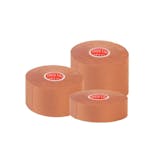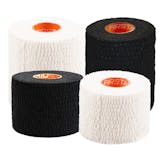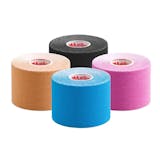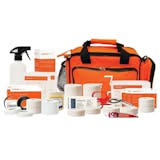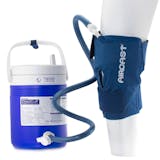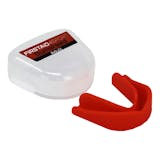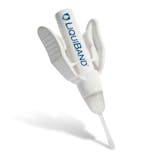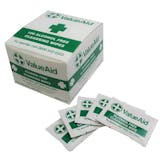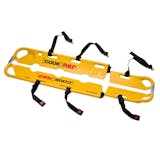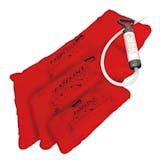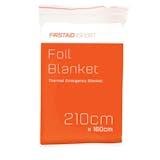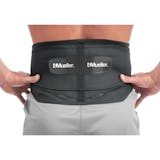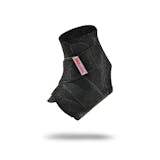Running with Plantar Fasciitis
 Many people believe that only long distant runners develop plantar fasciitis, but this is false. It is caused by the constant stress that is put through the heel of the foot, meaning anyone who takes part in a high impact sport is at risk. The problem with running is that people tend to overpronate (foot rolls inward) when they run to ease pain, but this creates further tension on the ligament.
Ignoring the warning signs of plantar fasciitis is a no no. Any training should be put on hold to allow the foot to rest and recover. If more strain is added to the area the condition can be harder to treat to recovery time will increase. If a runner wishes to continue some form of training, we recommend an activity that will not put strain on the fascia such as swimming or cycling. This will enable the cardio levels to be kept up.
As with most injuries, rest, hot & cold therapy and self-treatment are key to getting back in to the race quicker.
Treatments
There are many ways that plantar fasciitis can be treated at home without medical intervention. Below we outline the most commonly used ones:
Many people believe that only long distant runners develop plantar fasciitis, but this is false. It is caused by the constant stress that is put through the heel of the foot, meaning anyone who takes part in a high impact sport is at risk. The problem with running is that people tend to overpronate (foot rolls inward) when they run to ease pain, but this creates further tension on the ligament.
Ignoring the warning signs of plantar fasciitis is a no no. Any training should be put on hold to allow the foot to rest and recover. If more strain is added to the area the condition can be harder to treat to recovery time will increase. If a runner wishes to continue some form of training, we recommend an activity that will not put strain on the fascia such as swimming or cycling. This will enable the cardio levels to be kept up.
As with most injuries, rest, hot & cold therapy and self-treatment are key to getting back in to the race quicker.
Treatments
There are many ways that plantar fasciitis can be treated at home without medical intervention. Below we outline the most commonly used ones:
 Hot & Cold Packs: these are easy to administer, and they can be alternated to help soother pain and inflammation. It is recommended to ice then warm the area for 20 minutes at a time to be more effective. You will find a large selection of hot & cold packs here.
Massage: various types of massage can help soothe the affected area. It is worth contacting a sports massage therapist who can give a deeper massage into the correct areas. This is done by using the thumbs.
Stretching: Stretch the fascia out by pulling the toes back towards your body. Start by gently stretching, building to pulling the foot back further. A resistance band can help with this exercise.
Strapping and taping: Using Zinc Oxide Tape to support the arch of the foot during the day can provide relief. You can find our Plantar Fasciitis taping method here.
Correct footwear: nothing is more important that having the right running shoe. Every running shoe is different (neutral, motion control & Stability). Also finding a shoe that fits correctly is of equal importance. The correct level of balance support and cushioning to the hell and arch of the foot is the main goal in choosing the right shoe.
Insoles: Using insoles can give added shock absorption to the foot. They can also help align your foot correctly when suffering from over pronounced ankles.
Night splint: The night splint is worn overnight and ensures a deep long stretch for advanced plantar fasciitis.
Reducing the chances of developing Plantar Fasciitis.
Prepare! Warming up not just your body but also your feet can reduce the risk of injury to the plantar fascia. Use a lacrosse ball to warm up the fascia or again pull back the toes of the foot to wake it up before putting any sudden stress on the sole of the foot.
Increase training gradually! Write yourself a training programme and stick to it. Ease into it slowly, building distance and difficulty as you go. Don’t leave training till the last minute before an event and set yourself realistic goals.
Rest! It is important to rest between training especially if you a getting ready for a long-distance event. This will relieve the stress put on the plantar fascia.
Hot & Cold Packs: these are easy to administer, and they can be alternated to help soother pain and inflammation. It is recommended to ice then warm the area for 20 minutes at a time to be more effective. You will find a large selection of hot & cold packs here.
Massage: various types of massage can help soothe the affected area. It is worth contacting a sports massage therapist who can give a deeper massage into the correct areas. This is done by using the thumbs.
Stretching: Stretch the fascia out by pulling the toes back towards your body. Start by gently stretching, building to pulling the foot back further. A resistance band can help with this exercise.
Strapping and taping: Using Zinc Oxide Tape to support the arch of the foot during the day can provide relief. You can find our Plantar Fasciitis taping method here.
Correct footwear: nothing is more important that having the right running shoe. Every running shoe is different (neutral, motion control & Stability). Also finding a shoe that fits correctly is of equal importance. The correct level of balance support and cushioning to the hell and arch of the foot is the main goal in choosing the right shoe.
Insoles: Using insoles can give added shock absorption to the foot. They can also help align your foot correctly when suffering from over pronounced ankles.
Night splint: The night splint is worn overnight and ensures a deep long stretch for advanced plantar fasciitis.
Reducing the chances of developing Plantar Fasciitis.
Prepare! Warming up not just your body but also your feet can reduce the risk of injury to the plantar fascia. Use a lacrosse ball to warm up the fascia or again pull back the toes of the foot to wake it up before putting any sudden stress on the sole of the foot.
Increase training gradually! Write yourself a training programme and stick to it. Ease into it slowly, building distance and difficulty as you go. Don’t leave training till the last minute before an event and set yourself realistic goals.
Rest! It is important to rest between training especially if you a getting ready for a long-distance event. This will relieve the stress put on the plantar fascia. Tape! By applying tape to your feet before plantar fasciitis occurs can be a great benefit. It also protects against blisters!
Use a calf stretcher: designed to help stretch the calves to reduce tightness before and after exercise. Can also be used for plantar fasciitis rehabilitation.
We have a wide range of products that can help prevent and treat plantar fasciitis. You can find them on our website here.
Tape! By applying tape to your feet before plantar fasciitis occurs can be a great benefit. It also protects against blisters!
Use a calf stretcher: designed to help stretch the calves to reduce tightness before and after exercise. Can also be used for plantar fasciitis rehabilitation.
We have a wide range of products that can help prevent and treat plantar fasciitis. You can find them on our website here.

